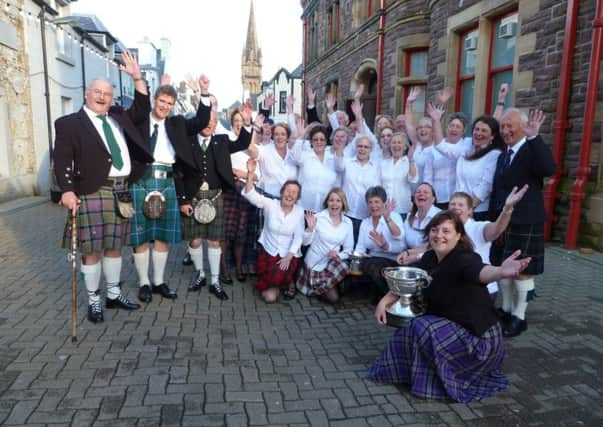Festivals hit a high note for economy


Some of the more successful, such as the Hebridean Celtic Festival, which opens next week in Stornoway, have become so ingrained into the annual cycle that the fabric of life would simply not be the same without their added texture.
Festivals and community events are often utilised as drivers for economically fragile areas, another added benefit is that they can efficiently market a town - or islands in our case - to a much wider audience, who until that point may never have been aware of our small corner of the world.
Advertisement
Hide AdAdvertisement
Hide AdLast year a report for the Association of Independent Festivals (AIF) highlighted that independent music events, including the Hebridean Celtic Festival, generated an estimated £1 billion for the UK economy in just four years.
The Hebridean Celtic Festival, which is marking its 21st anniversary this year, generates around £1 million annually to the economy of the Outer Hebrides.
This year the Islands will also host the Clò Mòr Festival (The Festival of Harris Tweed) from August to November, which aims to recognise achievements and innovations within the internationally renowned Harris Tweed industry.
A part of this is the exhibition ‘From the Land Comes the Cloth’: Ian Lawson, which is running at the An Lanntair arts centre, Stornoway until August 13th.
Advertisement
Hide AdAdvertisement
Hide AdWith the Harris Tweed Festival Day also taking place on August 13th to showcase the inner workings of the industry and its innovations through the years.
Officially launching the Clò Mòr Festival, Brian Wilson of Harris Tweed Hebrides said: “A decade ago, few would have thought there would be any cause for a festival to celebrate the success of Harris Tweed. The industry was being written off. Production was at historically low levels.
“Looms had little or no value. Most critically, there had been a 20 year gap in recruitment of weavers and mill-workers.”
However, he went on to point out that production of Harris Tweed has trebled over the past decade and this in relation to his own company, Harris Tweed Hebrides, means that they employ around 90 people at its Shawbost mill and give work to more than 150 home weavers.
Advertisement
Hide AdAdvertisement
Hide AdAt the end of the year, one of Scotland’s oldest and it could be argued the most prestigious of festivals, The Royal National Mod will return to the Western Isles. This week long Gaelic extravaganza is renowned for its ability to generate income for its host area.
In 2011 when the last Mod was hosted in the Islands it attracted around 2,800 visitors, with a further 2,500 residents in attendance.
Expenditure in the Western Isles by visitors was estimated at £662,480 and expenditure by Western Isles residents estimated at £250,000.
The average length of stay of Mod visitors was 4.55 days and their average spend was £295 with 80% spent in Stornoway. Western Isles residents spent an average of £136 more during the Mod week than during a normal week.
Advertisement
Hide AdAdvertisement
Hide AdOf the event Visit Hebrides said: “The National Mòd takes place in October which is at the end of the recognised tourist season and lasts for a week. This is of great benefit to accommodation providers as it extends the season and fills beds when they would normally be empty. This does not just apply to the Stornoway area. With many choirs, family and friends visiting, accommodation is provided further afield, as far away as the Isle of Harris, Uig and Ness. This takes the event to the rural communities and is of great economic benefit to B&Bs, Hotels and Self Catering business. The economic benefit can be felt across many industries through the island.”
So this year support the festivals taking place locally, not only are they fun and educational, but they also contribute a significant boost to the local economy.